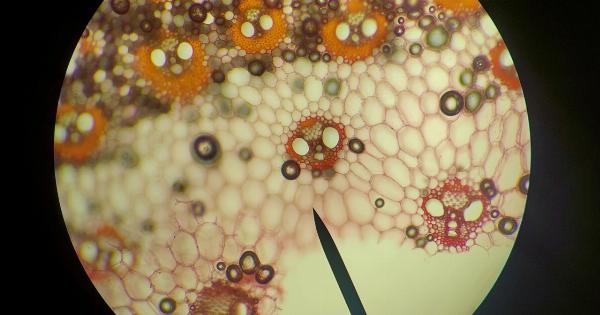Households are bustling with activity, filled with occupants going about their daily lives. The surfaces we touch, the food we prepare, the air we breathe – all seemingly harmless.
But hidden beneath this illusion of cleanliness lies an invisible world teeming with bacteria. These microscopic organisms are an essential part of our ecosystem, some beneficial and others potentially harmful.
In this article, we delve into the hidden realm of household bacteria, exploring their presence, impact, and ways to maintain a healthy living environment free from unseen threats.
The Diversity of Household Bacteria
Our homes play host to an extraordinary range of bacteria. From kitchen countertops to bathroom tiles, every surface offers a unique habitat for these microscopic beings.
One of the most common types of bacteria in households is Staphylococcus, which can be found on skin, in nasal passages, and potentially on various surfaces. While most Staphylococcus strains are harmless, some can cause infections if they find their way into open wounds.
Another prominent household bacterium is Escherichia coli (E. coli), often associated with uncooked meats and sewage-contaminated water. Ingesting certain strains of E. coli can lead to stomach infections, resulting in symptoms like diarrhea and vomiting.
A hidden bacterium, often overlooked, is Pseudomonas aeruginosa. This versatile pathogen thrives in damp environments, such as sinks and showerheads, and can cause infections particularly in individuals with weakened immune systems.
It is known to be resistant to many antibiotics, making it a significant concern in healthcare settings.
The Battle for Supremacy: Good vs. Bad Bacteria
Bacteria acquire a notorious reputation due to associations with diseases, but it is important to acknowledge the positive role they play in our homes.
Beneficial bacteria help maintain a healthy environment by breaking down organic matter, decomposing waste, and keeping harmful organisms in check.
Lactic acid bacteria, commonly found in fermented foods like yogurt and sauerkraut, aid digestion and boost our immune system. These bacteria prevent the growth of harmful pathogens in our digestive tracts, promoting optimal health.
Research has also shown that exposure to various bacteria during childhood can help develop a robust immune system, reducing the risk of allergies and autoimmune diseases.
This phenomenon, known as the hygiene hypothesis, suggests that an overly sterile environment may hinder the natural development of our immune responses.
Promoting a Healthy Home Environment
1. Regular Cleaning: Maintaining a clean home environment is crucial in minimizing the growth and spread of harmful bacteria.
Regularly disinfecting surfaces, especially in high-moisture areas like bathrooms and kitchens, can significantly reduce bacterial populations.
2. Proper Food Handling: Foodborne illnesses are often caused by bacteria like Salmonella and Campylobacter. To prevent contamination, it is vital to handle, store, and cook food properly.
Washing hands thoroughly before and after handling food can also prevent the spread of harmful bacteria.
3. Ventilation and Humidity Control: Proper ventilation and humidity control are essential in reducing the growth of bacteria.
Moisture-prone areas like bathrooms should be well-ventilated to keep humidity levels low, discouraging the growth of bacteria like mold and Pseudomonas aeruginosa.
4. Probiotics: Incorporating probiotic-rich foods or supplements, which contain beneficial bacteria strains, into your diet can help in maintaining a balanced microbiome.
These bacteria can promote a healthy gut environment, supporting overall well-being.
5. Be Mindful of Cross-Contamination: To prevent the spread of bacteria from raw foods to ready-to-eat items, it is crucial to separate raw meats, poultry, and seafood from other foods.
Using separate cutting boards, utensils, and preventing drips or spills can minimize the risk of cross-contamination in your kitchen.
The Invisible Guardians: Antibacterial Products
The desire for a germ-free environment has prompted the widespread use of antibacterial products, including soaps, wipes, and sprays.
While these products seem like a silver bullet against household bacteria, there are concerns about their long-term effectiveness and potential harm.
Overexposure to antibacterial products may contribute to the rise of antibiotic-resistant bacteria, rendering some medications ineffective when combating infections.
Additionally, studies have indicated a potential link between the frequent use of antibacterial products and allergic reactions. The use of plain soap and water for handwashing, along with proper cleaning practices, is often sufficient for most households.
Bacteria and Our Immune System
Our immune system serves as the first line of defense against bacterial pathogens. Regular exposure to bacteria, particularly during childhood, helps strengthen our immune response.
Limiting the use of antibacterial products and embracing a more balanced microbial environment can actually benefit our immune systems in the long run.
However, it is crucial to note that individuals with compromised immune systems, such as the elderly, pregnant women, and those with chronic illnesses, may require additional precautions to ensure their safety in a bacterial environment.
Conclusion
The unseen world of household bacteria is a complex and diverse ecosystem. While harmful bacteria can pose risks to our health, it is essential to remember that not all bacteria are bad.
Beneficial bacteria play crucial roles in maintaining a healthy living environment and promoting overall well-being.
By adopting proper cleaning and hygiene practices, being mindful of cross-contamination, and embracing the diversity of the microbial world, we can coexist with bacteria in harmony.
Striking a balance between cleanliness and exposure to bacteria can lead to a healthier home environment and a stronger immune system.































